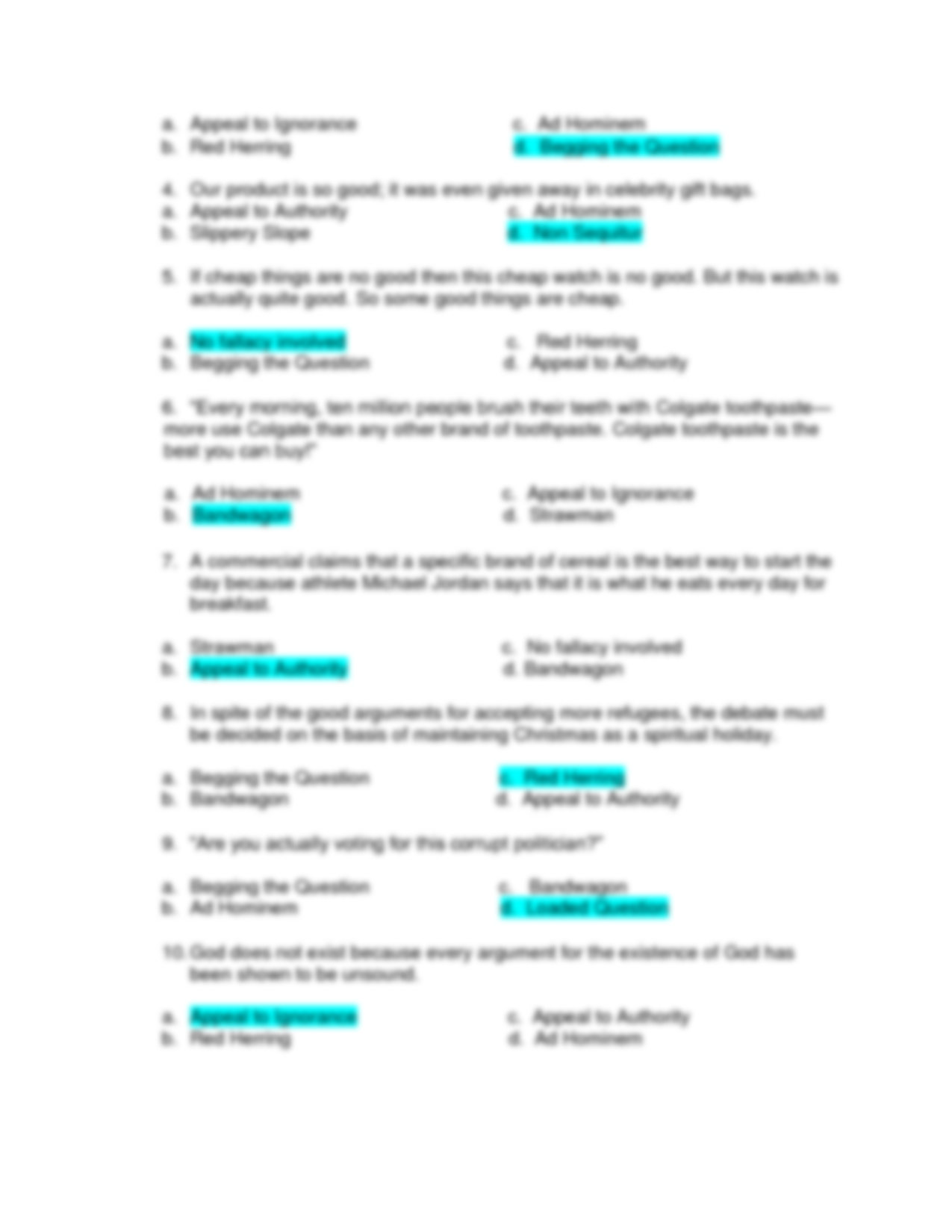Logical Fallacy Worksheet: Sharpen Your Critical Thinking Skills

Engaging with logical fallacies is not just an academic exercise; it's a vital part of developing a keen mind for critical thinking. Logical fallacies are flawed patterns of reasoning that often lead to incorrect conclusions. Recognizing these pitfalls can save you from poor decisions, misleading arguments, and flawed understandings. Today, let's dive into a detailed guide on logical fallacies and how to spot them in various contexts.
What are Logical Fallacies?

Logical fallacies are essentially errors in reasoning. They occur when an argument's structure is inherently weak or when premises are assumed to be true without adequate proof. Here's a quick overview:
- Ad Hominem: Attacking the person instead of the argument.
- Straw Man: Misrepresenting an opponent's argument to make it easier to attack.
- Hasty Generalization: Making a conclusion based on insufficient or biased evidence.
- False Dilemma: Oversimplifying an issue to two extreme choices, ignoring other possibilities.
- Bandwagon Fallacy: Suggesting that something must be true just because many people believe it.
Why Study Logical Fallacies?

Understanding logical fallacies helps in:
- Improving critical analysis skills.
- Strengthening your arguments by avoiding these common traps.
- Identifying flawed arguments in media, debates, and everyday conversations.
- Enhancing personal decision-making by recognizing when arguments are not based on solid reasoning.
Common Logical Fallacies and Their Examples

Ad Hominem

This fallacy involves attacking the character, motive, or some other attribute of the person making an argument, rather than addressing the substantive issues themselves. Here’s an example:
- Speaker A: “I think we need to invest more in renewable energy to save the environment.”
- Speaker B: “Well, you work for a solar panel company, so you would say that.”
Straw Man

The straw man fallacy is where you misrepresent someone’s argument to make it easier to attack or refute. Here’s an illustration:
- Opponent: “Reducing carbon emissions should be a priority.”
- Proponent: “So, you want to ban all cars and industries?”
Hasty Generalization

When conclusions are drawn from too small a sample or biased evidence, we’re dealing with a hasty generalization:
- Conclusion: “All people with tattoos must be rebels; I saw a few with one.”
False Dilemma

This fallacy suggests there are only two alternatives when in fact, there could be others:
- Statement: “You’re either with us or against us.”
Bandwagon Fallacy

Using popularity or the support of others as evidence for truth or correctness:
- Example: “Everyone else is buying that new brand of sneakers, so they must be the best.”
How to Spot and Avoid Logical Fallacies

Here are some strategies to help you recognize and avoid these common pitfalls in reasoning:
Analyze the Argument Structure

First, identify the premise, conclusion, and the logical steps from one to the other. Ask yourself:
- Is the argument logically sound, or does it make any unwarranted leaps?
- Are there hidden assumptions that might not be true?
Be Skeptical of Emotional Appeals

Fallacies often rely on emotional persuasion rather than on logical reasoning. Watch out for:
- Over-reliance on anecdotal evidence.
- Use of fear or hope as a means to convince.
Check for Sufficient Evidence

Ensure that the evidence provided is both sufficient and relevant:
- Is there enough evidence to support the claim?
- Is the evidence directly related to the claim, or is it tangential?
Recognize Patterns

Many fallacies have recognizable patterns. Familiarize yourself with common ones like:
- Overgeneralization.
- Focusing on extremes rather than nuances.
- Shifting the burden of proof.
✍️ Note: When engaging with arguments, always take a moment to identify the type of fallacy, if any. Not every argument with which you disagree will contain a fallacy, but being aware of these logical errors will make you a more discerning thinker.
In closing, recognizing and avoiding logical fallacies isn't just about winning debates or crafting persuasive arguments; it's about fostering a culture of rational and informed discussion. By sharpening our ability to identify flawed reasoning, we enhance our own cognitive capabilities and contribute positively to our communities. Logical thinking isn't merely a tool for philosophers and logicians; it's a vital skill for every individual striving to make well-reasoned decisions in an increasingly complex world.
What is the difference between an ad hominem and a straw man fallacy?
+
An ad hominem fallacy targets the person making the argument, attempting to discredit their claims based on their character or circumstances. A straw man fallacy, however, distorts or exaggerates an opponent’s argument to make it easier to refute, essentially attacking a weaker version of the original argument.
Can logical fallacies ever be justified in debate?
+
While logical fallacies are typically seen as errors in reasoning, there are contexts, like rhetoric or persuasive speech, where a speaker might knowingly use them for effect. However, in formal logic or when aiming for clarity and honesty in communication, fallacies should be avoided.
What are some tools or resources to learn more about logical fallacies?
+
Many websites offer comprehensive lists of logical fallacies. Books like ‘A Rulebook for Arguments’ by Anthony Weston or online courses like those offered by Coursera or edX on critical thinking provide in-depth analysis and exercises to identify fallacies.
How do I respond when someone uses a logical fallacy during a discussion?
+
Responding to logical fallacies involves:
- Pointing out the fallacy calmly.
- Explaining why it’s a fallacy.
- Redirecting the conversation to the substance of the argument or the evidence at hand.



